More amazing news out of GOG this morning, as the service has just announced that Wing Commander III is now available! WC3 is the last game in this 'set' of EA titles. The usual $5.99 will buy you a game that's easily worth ten times that--pick up your copy now! The download comes with the usual array of manuals and is DRM-free... and it also has more bonus features than we've seen in a GOG EA release before! As always, we'll be celebrating the release with retrospective updates about the making of the game and some of the fandom it has spawned over the years throughout the day--check back soon! In the meantime, get your copy here.
One great way to learn about the development of Wing Commander III is through Origin's internal 'Point of Origin' newsletter, which chronicled the process from the point of view of the developers themselves. Here are the issues relevant to WC3's development and release:
- Vol. III, No. 46
- Vol. IV, No. 52
- Vol. IV, No. 53
- Vol. IV, No. 54
- Vol. IV, No. 55
- Vol. IV, No. 56
- Vol. IV, No. 57
- Vol. IV, No. 58
- Vol. IV, No. 59
- Vol. IV, No. 60
- Vol. IV, No. 61
- Vol. V, No. 1
- Vol. V, No. 2
- Vol. V, No. 3
- Vol. V, No. 4
- Vol. V, No. 5
- Vol. V, No. 9
An unprecedented interactive film shoot required an impressive script! You can click on the image below to download a PDF scan of Wing Commander III's shooting script. You can also download a doc version of the script, here, although it is missing some cool parts (like the background loudspeaker lines for the Victory.)
Here are a collection of sketches developed early in the design process of Wing Commander III, from which both 3D models of ships were built and actors were cast. Note the even sexier take on mechanic Rachel Coriolis.
Below is a PDF download of one of my favorite 'behind the screens' documents--Wing Commander III's prop book. It contains sketches, correspondence and notes about the prop selection for the game. Everything from the contract with the helmet manufacturer to the discussion about what chairs to use on the Victory bridge!
Unfortunately, very few Wing Commander III storyboards have been archived--but we do have a small selection! Check out these sketches and their accompanying script pages:
How much work did it take to 'build' one of Wing Commander III's virtual sets? Check out the evolution of Gunnery Control, from the initial concepts to the finished render!
Here are some fascinating Wing Commander III "set" sketches by Origin artist Mark Vearrier. Check out how much detail went into the asteroid!
Here's a rare treat--"bigger" renders of two of Wing Commander III cockpits, courtesy of Origin artist Craig Halverson. In this shot from his portfolio you get to see areas of the screen cut off in the actual game!
We recently scanned big set of candids taken on the set of Wing Commander III--you can really get a feel for what the atmosphere of the first serious full motion video shoot was like. Check out the full collection here. You can also find a gallery of photos showing the building of the game's Kilrathi puppets here.
You've seen the candids--now here are the fancy, black and white posed photos from the Wing Commander III set. Things look more spacious and less chaotic!
One of Wing Commander III's most famous "extras" was a 'Behind the Screens' VHS tape, a full length program that interviewed both actors and developers to talk about how the game was made. You can download a high quality version here.
Here's an interesting comparison--a shot from Wing Commander III's early test rendering (left) compared with the finished game (right); note how much the set was changed as time went on... even the fighter class in the air above was switched!
Want to watch every video from Wing Commander III right here in the safety of your browser? Head over to our oft-forgotten Holovids Section ("CIC Yellow",) where you'll find an index of every Wing Commander III flick, complete with the accompanying script segment! It's like playing the game without all that nasty space combat getting in the way...
There's a lot of video in Wing Commander III... but there could have been more! Several scenes were cut from the finished game to enable it to fit on smaller CD-ROMs--the first generation of CD 1x CD drives was unable to read the now-standard 72-minute CDs, forcing Origin to cut down WC3. Removed from the game were the famous "Hobbes explanation" and a variety of 'infobursts,' short news segments where a reporter talked about the state of the war. Thanks to their inclusion on later console ports, you can access and download all the scenes here.
Want to see what Prince Thrakhath looks like today? Here he is, as stored at Bioware Mythic in Fairfax, Virginia! Maybe he'll be needed again someday. And if you're interested in seeing many, many photos of the Emperor's claw, go here.
Here are a host of screenshots from beta versions of Wing Commander III--can you spot the differences?
Every Wing Commander team earned a t-shirt for their hard work... and this is what the Wing Commander III shirt looked like!
The public's first look at Wing Commander III was this set of screenshots, set up to show off the game's 3D engine in action! You may note many differences, including a triangular transport which did not make it to the final game and different textures for the inside of a carrier.
These fourteen screenshots were the first images Origin put out from Wing Commander III's FMV. These pictures changed everything--no one had any idea it was going to look like this. I remember downloading these in a (then) big pkzip file from Compuserv's flight sim area...
Here is the "sell sheet" for Wing Commander III--the first document sent to retailers to convince them to place orders for a new game! I love the bit about Wing Commander III being the equivalent of 1,200 floppy disks.
Want a good example of the craziness behind the Wing Commander III PR campaign? Here's a three-page UK promotion for the game which involves a contest to fly a Russian fighter jet!
Just like a movie, Wing Commander III had a series of theatrical-quality trailers! Before the game came out, I distinctly remember walking into a Babbages (now Gamestop) and finding a VHS tape playing a loop of the game's trailer. I was enthralled--and I stood there in the mall watching it over and over for an hour. You can find that and other trailers for viewing and download here... or if you're especially brave, check out this Japanese WC3 PSX trailer.
29 megabytes doesn't seem like a big deal in 2011... but when Wing Commander III came out, it was unheard of. Here was a demo that was bigger than any other game you owned. So big, in fact, that it inaugurated the previously unheard of concept of including a CD-ROM with magazines (including the first issue of PC Gamer.) The demo features an original mission, flying an Arrow against wings of Dralthi, and the gameplay itself looks a little different from the finished game. You can download it here (29 mb).
Wing Commander III featured an impressive array of fighters and capital ships--more than any previous game! Note the new distinct 'knife like' look for all Kilrathi ships--a result of an effort to develop a more unified look for the Wing Commander universe.
One of the many major changes for Wing Commander III was the switch to a new composer. Origin hired George Oldziey in 1994 as their in-house composer, and he quickly made his mark on the Wing Commander saga. You can download a variety of mp3s and collections of the game's MIDI tracks below. Music from Wing Commander III was also included on two albums--Origin Audio CD Vol. III, includeed with the premiere edition of the game, and a promotional CD called Music from the Wing Commander Universe released by George Oldziey.
Ever wanted to integrate the sounds of Wing Commander III (and IV) into your daily life? Now you can! We've extracted all the sound effects from the PSX versions of the game... so you can make your ringtone a Tachyon blast. Download a copy here.
There's no question that Heart of the Tiger's box art was designed to evoke the original Star Wars posters--it even uses the X-Wing-like Longbow bomber rather than the more emblematic Excalibur! Still, the art is magnificent:
Another great part of Wing Commander III is its incredible manual, Victory Streak. VS is the onboard magazine of the TCS Victory and like Claw Marks before it it does a wonderful job of putting you 'there' in the Wing Commander world. The great Russian WC site, WC in Russia, has an online version here. Unfortunately there isn't a great scan--hopefully the GOG release includes one!
The special "feelie" included in Wing Commander III was a fold-out poster called "Warbirds" which showed the game's Terran and Kilrathi fighters. The version included in the standard game was monochrome... but the one included with the Premiere Edition was full color! Check it out:
Another big first for Wing Commander III was the release of a 'Premiere Edition.' Now common, such a special edition was a big deal at the time; it was $100 and you had to call Electronic Arts to order it in person. The game came in a huge, flat cardboard pizza box that included all the normal game items plus a color version of Warbirds, a soundtrack CD, a 'Behind the Screens' CD, a t-shirt, a 1995 calendar, a VHS 'making of' tape, a folded poster and a copy of Fleet Action. The edition was also available in German, where it came with a different white t-shirt! Sam's Club also had their own version of the package, which came in an enormous Wing Commander III box!
The PC version of Wing Commander III was a massive success, spawning a host of ports on that generation's new, more powerful 32-bit consoles.
3DO: The 3DO version of Wing Commander III is one of the finest console ports ever created. Rather than tax the 3DO hardware trying to recreate the PC version of Wing Commander III, the 3DO version instead opts for a different experience--the graphics aren't as impressive, but the gameplay (including every mission) is redesigned for faster, more action-oriented gameplay. The result is an entirely new Wing Commander III experience.
PSX: The Playstation port tries to emulate the original release, with a great deal of success. Some cuts were necessary--including ground missions--but the larger size of the standard PSX discs did allow for more videos. Unfortunately, it has some difficulty running on modern iterations of the Playstation.
Macintosh: The Macintosh version is almost identical to the PC release. It was developed by Lion Entertainment in Austin, a group that worked closely with Origin.
Windows 95: The Windows 95 version of Wing Commander III was first included in 1997's The Kilrathi Saga package. The only major change in the release was a switch to digital music, which unlike the other Kilrathi Saga ports was not reorchestrated. In Japan, this version was sold separately.
At least three other ports were cancelled at some point in their development. When the game was released there was talk of doing a separate optimized version for Pentium computers. Another version, for the Sega Saturn, was announced and actually shown at a trade show but later abandoned. Finally, a version for the M2, sucessor to the 3DO, died with the console itself.
Here's one more short document from the Wing Commander III development team--a list of special tools created for the PSX version. It's interesting to see how much work goes into these things before the sort of development we're familiar with can even start.
Interested in learning more about the 3DO port of Wing Commander III? Here is a VERY interesting 1995 transcript from an online chat that Origin held about the game. Some interesting stuff there, including the mention that work is being done on Wing Commnder IV for the M2. I wonder how far they got on that one...
LKoski: I have not bought WCIII but have seen and played it on my friends computer, exactly what changes were
LKoski: made for the 3DO version?
OSI: recompressed movies, faster load times, Higher color of the movies (64K colors instead....
OSI: 256), The audio is 16 bit stereo and it is in dolby surround, because we were able to ....
OSI: use the larger 74 minute CD capacity of the 3do format we could add footage that was not....
OSI: included in the PC version....
Want to see a Wing Commander III teaser in the most difficult way possible? Well, then, dust off your Goldstar 3DO system, burn this 3DO-version demo to a disc and try it out! This '3DO Interactive Sampler' (#3) was given away with consoles and magazines... and even sold for a few dollars at the time! Download it here. (Interesting side note: when we first posted this demo, it wound up on a list of 'April Fools Pranks' sent around the internet... despite not being posted on April 1st. It's real!)
Wing Commander III marked a jump from popular game to Star Trek-style franchise. For the first time, regular companies wanted to license the Wing Commander IP--and lucky consumers could get card games, posters, novels and the like at their local stores. The first big licensee was a company called Zanart, which made t-shirts, hats and something called "Chromart." Chromart, a thoroughly 1990s idea, was framed artwork with portions printed in reflective chrome for a slight 3D effect. Zanart put out two Wing Commander 3 shirts, a logo hat and two Chromart pieces. The shirts and Chromart offered the choice between the Excalibur-bombing-Kilrah scene and the box art.
If you liked it then you should have put the Wing Commander III logo on it! Origin's promotions department went Wing Commander III crazy, branding everything from luggage tags to binders to... paper plates? It happened!
Of all the strange forms Wing Commander has taken over the years, by far the coolest was spawned by Wing Commander III--a customizable card game where players face off s either the TCS Victory or a Kilrathi carrier! The game was developed by Mag Force 7 and released in 1995; unfortunately, a proposed Wing Commander IV expansion never materialized. You can see high resolution scans of every card here.
Wing Commander III inspired more books than any other game in the series--not only an assortment of guide books, but also a novelization published in three languages! There were three different official guides--Origin's Official Guide, the Authorized Combat Guide and a Japanese-only book about the Playstation port. The Authorized Combat Guide was also translated to French.
There were also an array of unofficial guides. The English one, from Prima, was famously poorly designed. Several others were available in Germany:
The novel, by Dr. William Forstchen and Andrew Keith, has been published in English, German and Czech. All three versions have different covers:
Again thanks to Pix, we are able to offer a PDF of Origin's Official Guide's 'making of' section for Wing Commander III. It's not as comprehensive as the Wing Commander I book, but there's still a lot of cool material here. Plus, the occasional blast of 1990s nostalgia--Micro Machines! Babylon 5! Etc.!
Here's a cool collection of high resolution Wing Commander III images intended for print--decorate your home!
Click below to download Wing Commander III's "press book"--a large collection of magazine reviews and other clippings about the game maintained by Origin.
Wing Commander III prompted hundreds of magazine articles in 1994-95, all over the world! Here are a few cool samples, from France, Greece, Australia and the United States!
Wing Commander III had a worldwide promotional campaign! Here is Mark Hamill on Club Dorothy talking about the game (and Star Wars, of course.) Here's the translation:
It's a job that didn't exist even five years ago. The main difference is the fact that the story can branch in different directions, different things can happen, so unlike a conventional script that has one storyline. This one was great fun and I actually looked forward to going to work because it was new, because it was something I hadn't done before.
I'm amazed at the shelf life of this project. It goes on and on and there's new toys and a new generation of kids who watch it on tape. I'm not actually involved in the next one, they go back to the previous generation. I will be in the audience now for the new Star Wars.
Okay, you've had fun with the game... time to cheat! But wait: the old "Origin-k" trick no longer works. What do you do? The game includes an invulnerable mode in the options, but what about the 'finger of death'? The new command line for WC3 is "wc3 -mitchell" You'll know you have it right when the game plays the MST3K cast shouting 'MITCHELL' as you launch your fighter! Hit alt-w to kill any target.
As we celebrate Wing Commander III's first widespread retail availability since the late 1990s, we would like to mention for anyone that we have the game's source code in our offline archive. We know it's frustrating for fans, who could do amazing things with this, to read these updates... but it's also in everyone's best interests to remind EA that we have the raw material from which they could port Wing Commander III to a modern computer or console. Just let us know!
Here are some nice portraits of the Wing Commander III team. In order: Adam Foshko, Chris Douglas, Chris Roberts, Craig Miller, Dan Orzulak, Frank De Palma, Frank Roan, Galen Svanas, George Olziey, Kirsten Maryott, Mark Chandler, Martin Galway, Nenad Vugrinec, Prem Krishnan, Tim Ray, Tony Morone, Tuesday Frase and the QA team!
As with the previous GOG release, we wanted to honor the men and women who put their blood, sweat and tears into creating Wing Commander III. That's easier said than done with this project--owing to its unprecedented film shoot and other requirements, Wing Commander III involved the work of some 300 people!
GAME MATERIALS
Product Manager - Galen Svanas
Documentation - Tuesday Frase, John McLean, Melissa Mead
Document Translation - Brigitte Fleeman, Isabelle Rice
Editing - David Ladyman
Box Design - Al Carnley
Cover Art - Sam Yeates
Documentation Design - Al Carnley, Catherine Cantieri, Trey Hermann
Blueprint Design - Trey Hermann
Calender Design (Premiere Edition) - Jennifer Davis
T-Shirt Design (Premiere Edition) - Trey Hermann
CAST
Col. Christopher Blair - Mark Hamill
Admiral Tolwyn - Malcolm McDowell
Maj. James "Paladin" Toggart - John Rhys-Davies
Capt. William Eisen - Jason Bernard
Maj. Todd "Maniac" Marshall - Tom Wilson
Chief Tech Rachel Coriolis - Ginger Lynn Allen
Lt. Robin "Flint" Peters - Jennifer MacDonald
Lt. Ted "Radio" Rollins - Courtney Gains
Lt. Winston "Vagabond" Chang - Francois Chau
Lt. Laurel "Cobra" Buckley - B.J. Jefferson
Maj. Jace "Flash" Dillon - Joshua Lucas
Lt. Mitchell "Vaquero" Lopez - Julian Reyes
Col. Jeanette "Angel" Devereaux - Yolanda Jilot
Newcaster - Barbara Niven
Bartender - J.P. Pereat
Voice of Thrakhath - John Rhys-Davies
Voice of Melek - Tim Curry
Voice of Emperor - Alan Mandell
Voice of Hobbes - John Schuck
GAME DEVELOPMENT
Producer - Chris Roberts
Director - Frank Savage
Associate Producers - Prem Krishnan, Jean-Marc Chemla
PROGRAMMING
3-D System - Frank Savage
Capship Polygonal Engine - Frank Savage
Spaceflight System - Frank Roan, Frank Savage
Gameflow System - Chris Todd
Object System - Frank Roan
Atificial Intelligence - Frank Roan
Nav-Map System - Anthony Monroe
Cockpits & Sound Effects - Antohny Monroe
Movie Compression & Playback - Jason Yenawine
JEMM DPMI 32-bit DOS Extender - Jason Yenawine
SGI Movie Editor - Oliver Yu
Object Data & Implementation - Tim Ray
Polygonal Collisions - Peter Shelus
Libraries - Jason Yenawine, Frank Savage, Tony Bratton
Hi-Res 3-D Object Editor - Paul Isaac, John Reeme, Aaron Martin, Frank Savage
Math & Algorithms Consultant - Peter Shelus
Technical Consultant - Zachary Simpson
DESIGN
Initial Mission Design - Tim Ray
Mission Design & Implementation - Tim Ray, Ben Potter, Jeff Shelton
Gameflow Design & Implementation - Prem Krishnan, Chris Todd
AUDIO
Interactive Sound Design - Nenad Vugrinec
NIM Interactive Music - Goerge Oldziey, Nenad Vugrinec
Spaceflight Dialogue Editor - Barry Leitech
Sound System by - Human Machine Interfaces, Inc.
Digital & MIDI Sound Engine - Aaron Martin, John Reeme, Frank Savage
ART
Art Director - Chris Douglas
Assistant Art Director - Paul Steed
3-D Artists - Chris Douglas, Mark Vearrier, James Lee, Thomas Lee, Chris Olivia, J.C. Combs, Alan Perez, Craig Halverson, Steve Pietzsch
RealSpace Objects - Paul Steed, Dean McCall, Michael Presley, Elizabeth Foster Pugh, Sam Laskowski, Jeff Shelton, Tim Ray, Ben Potter
Mission Briefing Animations -Paul Steed, Elizabeth Foster Pugh, Eric Lund, Dicko Mather, Jake Rodgers, Brian McLean, Gary McElhaney, Danny Garrett
Gameflow Options Screens - Brian McLean, Mark Vearrier, Chris Douglas
Cockpit Displays - Elizabeth Foster Pugh, Jennifer Ayers
3-D Software Provided by - Alias Research
Graphics Hardware Provided by - Silicon Graphics
PRODUCT SUPPORT
QA Project Leader - Dan Orzulak
Assistant Project Leaders - Anthony L. Sommers, Todd Wachhaus
QA Team - David Abbot, J. Allen Brack, James Flores, Mark Franz, Jim Hill, Kevin Kushner, Bill Lacoste, Jeremy Mappus, Sean Mustakas, David J. Reese, Mike Songry, Reece Thornton
QA Hardware Lab - Brian Wachhaus, Evan Brandt
Translator Liaison - Jeremy Mappus
Product Support Manager - Kay Gilmore
QA Supervisor - Donna Mehnert
Customer Service Supervisor - Marie Williams
MOVIE PRODUCTION
Executive Producer & Director - Chris Roberts
Producer - Donna Burkons
Screenplay - Terry Borst, Frank De Palma
Casting Director - Nicole Arbusto, Joy Dickson
1st Assistant Director - Harry Jarvis
2nd Assistant Director - Athena Alexander
2nd 2nd Assistant Director - Tia Ardran
Production Manager - Pam Auer
Technical Director - Mark Day
Director of Photography - Virgil Harper
Assistant Camera Operator - Tom Kantrud
Ultimate Operator - Bob Kertesz
Ultimate Assistant - Greg Noyes
Sound Mixer - Walt Martin
Boom Operator - Paul Coogan
Script Supervisor - Kate Lewis
Storyboard Artist - Marc Baird
Set Designer - Cherie Baker
Gaffer - Reggie Lake
Best Boy Electric - Robert Neville
Rigging Gaffer - Eddie Maloney
Electrician - Shaun Goldsmith
Key Grip - Gus Vasquez
Best Boy Grip - Greg Etheredge
Grips - Jim Cocker, Kevin Cook, John Martin, Shane Brott, Jeff Murrell
Props - Josh Logan
Prop Master - Tamara Clinard
Dresser - Todd Szabo
Hair - Lana Sharpe
Makeup - Bill Meyer, Kim Miner
Wardrobe - Mary Paxton, Krista Schluderman
Set Costumer - Nan Gail
Construction Coordinator - Mike Clark
Construction - Shane Middleton
Kilrathi Puppets/Props Provided by - Precisions Effects
Creature Silt Supervisor - John Parsons
Suit Operators - Michael Hood, Billy Butler, Chris Bergschneider, Randy Harvey
Creature Suit Technicians - Rick Cedillo, Terri Fluker, Ron Ford, Alex Mindt, Gloria Munoz
Asst. Creature Suit Technicians - Linda Newman, Wendel Phillips, Mike Walters
Precisions Effects P.A. - Karen Carmichael
Puppeteer - Bud McGrew
Puppeteer Assistant - Kass Nassiri, Mike Newman
2nd Unit Director - Richard Johnson
2nd Unit Director of Photography - Bill Sheehy
2nd Unit Ultimatte Operator - Tom Tcimpidis
2nd Unit Gaffer - Henry Coccetti
2nd Unit Script Supervisor - John McLean
2nd Unit Sound Mixer - Mary Jo Devenney
Pyrotechnic Effects - Dream Quest Images
Pyrotechnic Supervisor - Robert Stadd
Pyrotechnic Shoot Director - Adam Foshko
EA Productions Counsel - Carol Contes
EA Productions Accountant - Tracey Snodgrass
EA Finance & Insurance - Bryan Neider, Sharon Warmboe
Production Accountant - Laurel Richter
Talent Paymaster - Karen Kodet
Pre-Production Manager - Richard Johnson
Asst. Pre-Production Manager - Adam Foshko
Assistant to the Director - John McLean
Publicity Provided by - The Villines Company
Unit Publicist - Morgan Moore
Mark Hamill's Stand-In - Emidio Antonio
Malcolm McDowell's Stand-In - Chief Gordon
Production Assistants - Jim Capp, Kirsten Maryott, Laurie Boykoff
Craft Service - Laura Bagano, Juana Martinez, Michael Foxworth
Talent Trailers Provided by - Star Wagons
Sound Stages Provided by - Hayvenhurst Studios
POST-PRODUCTION
Post-Production Director - Phillip Gessert
Austin Post-Production Supervisor - Adam Foshko
S.F. Post-Production Supervisor - Mark Day
Post-Production Coordinator - David Downing
Picture Editor - Phillip Gessert
Assistant Editors - Adam Foshko, Jay Mahavier, Mads A. Hansen, Lauren Giordano
Video Processing Facility - EA Media Lab
Video Processing & Digitization - John McLean, Jeni Day, Laurent Beurel, Michael Sweeney
Post-Production Assitants - Jean-Marc Chemla, Jennifer Ayers
Digital On-Line Facility - Western Images
Editors - Alan Chimenti, John Henkel, Greg Gilmore, Mark Sorenson
Harry Artist - Jimmy Simmons
Flame Artist - Simon Mowbray
Digital Non-Linear Editing System - Avid Technology
SOUND
Audio Director - Martin Galway
S.F. Audio Supervisor - Murray Allen
Original Score - George Oldziey
Re-Recording Mixers - Tony Berkeley, Ken Felton
Dialogue Editing - Tony Berkley, Ken Felton
Asst. Dialogue Editing - Jeni Day
Foley Editing - Tony Berkeley, Ken Felton
Music Editing - Randy Buck, Tony Berkeley, Ken Felton
Music Recording - Randy Buck
Supervisor Sound Effects Editor - Randy Buck
Sound Effects Editor - Jason Cobb
Sound Designers - Stretch Williams, Britt Daniel, Marc Farly, Nenad Vugrinec
Special Kilrathi Vocal Effects - Tom Seufert
Contributing Composer - Paul Baker
OSI Foley Artists - Stretch Williams, Britt Daniel, Jason Cobb
Foley Guitar by - Stretch Williams
OSI Foley Recordists - Randy Buck, Jason Cobb
Foley & ADR Services Provided by - Post Sound Corp.
Foley & ADR Mixer - Kris Campbell
Foley Artist - Pamela Kahn
Additional Voice-Overs - Jennie Evans, Tuesday Frase, Lisa Acton
ADMINISTRATIVE
Executive Assistants - David Downing, John McLean
Administrative Assistants - Andrea Brannan, Sabrina Watson
Network Technical Support - Kathie Lambdin, Sean Kelley
Hardware Technical Support - Rick McNeeley
Unix Gurus - Christopher Alexander North-Keys, John Reeme
Marketing & Promotions Guru - Jennie Evans
Product Marketing - Galen Svanas
Media Relations - David Swofford
Travel Coordination - Mindy Stringer, Norma Vargas
Translation Manager - Kirsten Vaughan
French Translation - Dominique Poumeryrol-Jumeau
German Translation - Frank Dietz
French Dubbing Supervision - Dominique Poumeyrol-Jumeau
Frech Dubbing by - Studios Lincoln, Paris
German Dubbing Supervision - Kirsten Vaughn
German Dubbing by - Film-und Fernseh-Synchron, GmbH, Munich
French Playtesting - Didier Jumeau, Karl Strand
German Playtesting - Andreas Koehler, Jorg Newmann
Special Thanks to - EA Productions, Rich Hilleman
As with previous GOG release, we would like to step back and look at some of the work Wing Commander's wizard, HCl, has done with Wing Commander III over the years.
Some years back an intrepid fan, Queeg, put together his own 'movie' cut from all of the Wing Commander III footage. It turns all the video and some careful gameplay footage into one cohesive narrative, which clocks in at just under two hours. Grab your copy here (751 meg).
What Standoff did for Wing Commander II, Wing Commander Saga will--hopefully!--do for Wing Commander III. Saga is a total conversion mod for Freespace 2 which takes its look, feel and story from Heart of the Tiger. The finished project hasn't been released yet, but a short prologue is available! You can download a copy here.
"Here she is: one Hellcat V. She's prepped, primed, loaded, locked -- and ready to kick some ass." - Chief Tech Rachel Coriolis, TCS Victory, 2669.

A Hellcat stands guard at the TCSF Flight School on Sirius.
The Hellcat V was a mid-war Terran Confederation medium fighter which served with distinction against the Kilrathi. Designed by the Garner Industries team and manufactured by Douglas Aerospace as a long-term replacement for the Wildcat interceptor, the Hellcat was best known as a workman's spacecraft. The fighter lacked the artist's panache of the Rapier II but instead enjoyed a life-long reputation as a particular sturdy, capable design. By the end of the war, the widely-deployed Hellcat was considered "the best all-around ship in the fleet." It should come as no surprise that an early model Hellcat has served as gate guardian at the Terran Confederation Space Forces Flight School at Sirius since the mid-50s.
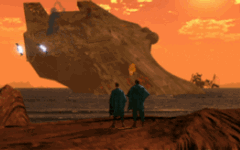
Hellcats identify the wreckage of the TCS Concordia.
Hellcats were generally deployed in point defense squadrons or outfitted for light attack missions. Later models were outfitted with increased fuel capacity for longer-duration escort missions, based on Hellcat tactics developed by Colonel Christopher Blair at Tamayo. Owing to an excellent aerodynamic profile, the reliable craft were also frequently assigned to air bases or tasked with space-to-ground missions.
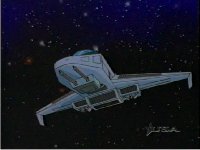
A simulated Hellcat trains future pilots about space combat.
The Hellcat's service history reads like the screen credits of a great supporting actor, taking part in many of the war's later campaigns but never truly taking center stage. The famed "Class of 54" trained for their first combat missions in Hellcat simulators on Sirius. A Hellcat squadron operated off the TCS Tiger's Claw with 58th FW during the closing months of the Vega Campaign, suffering losses during the fighting at Dolos. Later in the war, two of the 58ths surviving squadrons, the Killer Bee's and the elite Black Lions, would transition to the Hellcat. As the war progressed it was Hellcats that first located the wreckage of the TCS Concordia on Vespus, Hellcats that futily defended the TCS Coventry and Hellcats went in with the marines at Alcor.

Hellcats had an excellent roll radius and throttle rate.
As the war raged on, the Space Force opted to consolidate medium squadrons with Hellcats rather than Epees or Rapier IIs. Pilots were given Hellcat transition training to fly the latest models. Christopher Blair and Jesse Dunlevy, who would both command the TCS Lexington's fighter wing after the war, attended transition training together. Noted squadrons operating Hellcats in the final months of the war included Dynamo Hum, Fire Birds, Gray Hornet, Great White, Osprey, Burma Tiger, Crazy Diamond, Red Ranger and Throat Wolves. Elite unites included Alphonzo's Raiders, Valkyrie and Zombie Wolf.
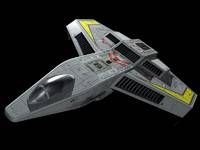
A post-war Hellcat off the TCS Lexington (CV-44)
Two Hellcat squadrons flew off TCS Victory during the war's final, darkest days in support of Colonel Blair's legendary Excaliburs as part of the 36th FW. Red Squadron served as point defense for the duration of Blair's assignment and White Squadron joined the carrier's complement during the run up to the Behemoth debacle. It was early on in his tour aboard the Victory that Blair decided to experiment with using his wing's short-range Hellcats to protect its more powerful Thunderbolt VIIs. Accompanied by a refueling shuttle for longer patrols, the interceptors thrived in this new role.
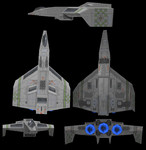
A Hellcat in the markings of the 36th Fighter Wing's Red Squadron.
One truly black mark on the Hellcat's service record was a famous incident in which a single Strakha stealth fighter was able to shoot down four Hellcats in ten minutes. The engagement became one of the most lopsided dogfights on record in the war's long history.
The immediate post-war era saw a surge in Hellcat use, with longer range models escorting border convoys and front line squadrons re-equipped with factory fresh units. Recalled to active duty aboard the TCS Lexington, Colonel Christopher Blair again found himself in charge of a Hellcat unit. This time, he opted to fly a Hellcat himself, using the fighter in the abduction at Tyr and the capture of Masa. Multiple Hellcats off Lexington defected to the BWS Intrepid. Loyal Hellcats would battle Union Banshees at Circe and through the defense of the Vesuvius.
The early 70s brought about another black mark: The Project initially utilized Hellcats and Thunderbolts as technology testbeds which ultimately resulted a production run of "Black Hellcat" advanced technology demonstrators. The Hellcats, painted matte black, were the immediate predecessor to the Black Lance, and they served with cold distinction during the Border Worlds affair.
By the mid-2670s, the fleet refresh finally moved to retire the Hellcat. Two designs may claim a direct lineage: the impressive F-104 Bearcat, a dedicated space superiority fighter, and the sturdy F/A-105 Tigershark, which would ultimately replace the Hellcat in most front line units.
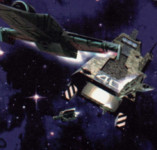
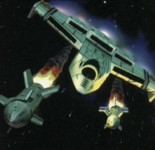
Hellcats fly point defense for a Yorktown-class light carrier.
Grumman began the XF6F project six months before the Japanese attack on Pearl Harbor. Originally designed to use the same engine as the F4F Wildcat, combat experience during the first few months of the war demonstrated the need to mount a more powerful engine to match the performance of the Zero. The entire aircraft was designed to accommodate the change to the larger engine. The Pratt & Whitney R-2800 Double Wasp engine provided 2,000 horsepower and excellent performance to the new F6F airframe. The R-2800 engine was also mounted in the wartime Republic P-47 Thunderbolt, Vought F4U Corsair and the postwar Grumman F7F Tigercat and F8F Bearcat.
While the F6F-3 Hellcat does share some visual similarity to its Wildcat sibling, the similarities end there. The Double Wasp engine provided more power which allowed the Hellcat to climb with the Zero. Many veteran Zero pilots would actually fall victim to this ability when the Hellcat was first introduced. Zero pilots mistook the Hellcats for Wildcats and would attempt to climb away, going vertical, from the American fighters in hopes of causing a stall, which the Wildcat was guaranteed to do in a vertical climbing maneuver against the Zero. The Hellcat could continue to climb against the Zero into a firing solution and then down the fighter with its six .50 caliber machine guns as the Zero dove down on what it thought would be a stalled Wildcat. The Hellcat had a significantly larger fuel capacity than the Wildcat giving the Hellcat almost double the combat radius of the Wildcat.
The F6F-3 Hellcat joined the Fleet in February 1943 when VF-9 became operational on the USS Essex (CV-9), the first of the new class of carriers, although Essex joined the Fleet after her sistership USS Yorktown (CV-10) because of the hard-driving skipper of the Yorktown, Captain J.J. “Jocko” Clark. The friendly rivalry between the two ships continued throughout the war. The Yorktown took the second, and perhaps more important, milestone on 31 August, 1943 when the first Hellcat launched from its deck on the new carriers first mission to raid Marcus Island. Marcus Island sits 2,700 miles west of Pearl Harbor. The new carriers and crews were the conduct their first combat mission against the lightly defended island in the early morning of the 31st. Task Force 15 was made up of the new carriers USS Essex (CV-9), USS Yorktown (CV-10), USS Independence (CVL-22), the new fast battleship USS Indiana (BB-58), two light cruisers, ten destroyers and a single fleet oiler. No aerial opposition was encountered by the Hellcats of Task Force that first day, although two Hellcats from VF-5 were lost to antiaircraft fire.
The next day, 1 September , Hellcat history was made near Baker Island when VF-6 pilot Lieutenant (jg) Richard L. Loesch made the first kill in a Hellcat when he downed a Kawanishi H8K “Emily” flying boat. He was also the first pilot to have scored while flying both of the Grumman “cats.” Loesch had made his first kill in a F4F Wildcat during the Battle of the Eastern Solomons in August 1942. The Emily was the first of 5,163 claimed kills by Navy and Marine Hellcat pilots. Throughout two years of combat service, Hellcat pilots earned the highest kill-to-loss ratio of any aircraft of World War II at an astonishing ratio of 19-to-1. 305 American pilots became aces flying the Hellcat, more than another American fighter during World War II.
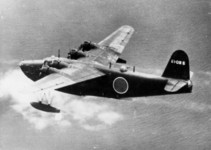
The first of more than 5,000 Hellcat kills was an Emily flying boat in the Central Pacific.
By the fall of 1943, every fleet and light carrier in the Pacific Fleet was stocked with F6F-3 Hellcats. Many of the land installations in the South Pacific had also received squadrons of Hellcats and Vought F4U Corsairs, which would be carrier ready until later in the war. On 5 November the veteran Saratoga (CV-3) and her new companion the light carrier USS Princeton (CVL-23) launched a single strike on the major Japanese base at Rabaul on the island of New Britain. 52 Hellcats escorted 45 Douglass SBD Dauntlesses and Grumman TBF Avengers to the targets resting in the harbor. Nearly 60 A6M Zeroes were in the air to meet the American strike. The Hellcats kept the Zeroes at bay as the SBDs and TBFs scored hits on six cruisers, heavily damaging three of them. Ten carrier planes were lost for roughly the same number of Zeroes. Less than a week later the Americans returned to raid Rabaul on 11 November, Armistice Day, with the three carriers of Admiral Montgomery’s Task Group 50.3.
The USS Essex, Bunker Hill (CV-17), and USS Independence launched 55 Hellcats and 46 Dauntlesses and Avengers on the morning of 11 November towards Rabaul. They were met by 68 Zeroes as they approached Rabaul. Five Japanese warships were hit during the raid including one destroyer sunk. As the carrier planes returned, the weather degraded and a follow up strike was cancelled. However, the Japanese had launched their own counterstrike against the American carriers. At 1350 Hellcats from VF-33 spotted the Japanese counterstrike 40 miles from the carriers. When the fighter controller stationed on the carrier asked for an estimate and was informed “There are millions of them!” In reality, there were 69 Zeroes, Nakajima B5N Kates, and Aichi D3A Vals from carrier squadrons transferred to Rabaul from their carriers stationed at Truk. 40 of the Japanese planes were shot down by Hellcats and land based Corsairs providing Combat Air Patrol (CAP). The American total for the day was roughly 50 kills for the loss of 18 aircraft. On 1 November there had been three Japanese air groups operational on Rabaul totaling 173 aircraft. Following the two American raids, 52 aircraft returned to Truk, almost all of them Zeroes.
The carrier groups of the Pacific Fleet were reorganized into Task Force 50 for Operation Galvanic, the invasion of the Gilbert island atolls of Makin and Tarawa. Six heavy and five light carriers formed the core of Task Force 50 and had 684 planes at their disposal. Every fighter in TF 50 was a Hellcat. On 23 November, the pilots of TF 50 finally made contact with Japanese aerial resistance. VF-16 pilot Ensign Ralph Hanks, got himself an impressive bag. Ensign Hanks was the first Hellcat pilot to become an “ace-in-a-day” by destroying five enemy aircraft in a single day’s work, in his case a single sortie. More than 40 Hellcat pilots became an “ace-in-a-day” in the next two years. The first Hellcat ace was Lt. Hamilton McWhorter, who earned the distinction on 18 November, 1943 after downing a Japanese flying boat near Tarawa.
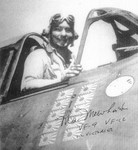

Lt. Hamilton McWhorter of VF-9 became the first Hellcat ace in November 1943. He was the first of more than 300 pilots who became aces in the F6F. He finished the war with 12 kills and the rank of Commander. He passed away in 2008.
During Operation Galvanic, not only did Hellcats provide daytime CAP, there was also a push to develop night fighter tactics to counter Japanese dusk and night torpedo attacks. Lieutenant Commander Edward Henry “Butch” O’Hare, flying an F6F Hellcat along with a wingman in another Hellcat and a TBF Avenger, conducted the Navy’s first ever nighttime fighter mission on 26 November. In a confusing first mission, the three planes had difficulty locating enemy targets until they stumbled upon a Mitsubishi G4M Betty bomber. In the ensuing melee O’Hare’s Hellcat was hit and he was lost. For fifty-four years who had shot down O’Hare remained a mystery. In 1997, historians Steve Ewing and John Lundstrom clearly state that the Japanese guns, and not friendly fire, took down one of America’s first heroes of the Pacific War. In the first months of the war, Butch O’Hare had single-handedly destroyed five G4M Bettys as they sought to strike the USS Lexington (CV-2). For his action, O’Hare received the Medal of Honor from President Roosevelt later in 1942. He had volunteered to return to flight duty and to lead the “Bat teams.” His loss was a great blow to the American naval aviation community.


Lt. Commander Edward "Butch" O'Hare sitting in his F4F Wildcat early in the war. He was awarded the Medal of Honor for his actions near Rabaul in the spring of 1942 when he singlehandedly destroyed five incoming G4M Betty bombers.
Over the Marshalls atolls, the fortresses at Truk and Rabaul, New Guinea, the Admiralties and others, the Hellcat performed above expectations. Time after time, Hellcats rose to meet their Japanese adversary and were able to best them using their aircraft’s superior performance and their additional training. Task Force 50 eventually evolved into Task Force 58, commanded by Admiral Marc “Pete” Mitscher, an early naval aviator, and comprised of fifteen carriers carrying almost a thousand aircraft, including more than 450 Hellcats by June 1944. The fast carriers had spent the previous year wisely and had developed new doctrine and tactics to best utilize their strength. Early morning “fighter sweeps” had been developed to suppress Japanese aerial defenses before they had a chance to get off the ground by launching a pure fighter force (at first exclusively Hellcats, but later the F4U Corsair would also be used) against Japanese airfields. In June 1944, the Fifth Fleet, led by Admiral Raymond Spurance, and spearheaded by Task Force 58, launched Operation Forager, the invasion of the Marianas islands of Sapain, Guam and Tinian. The Americans were not only seeking to secure the islands for future operations, Admiral Chester Nimitz, commander of the Pacific Fleet, sought to provoke a fleet engagement with the Imperial Japanese Navy’s Mobile Fleet. Prior to the invasion Nimitz said: “I don’t know anything more we can do to provoke these people into a fleet action.”
The invasion of the Marianas did send the Japanese fleet into motion. The Japanese High Command activated Operation A-Go in early June. The plan called for the Mobile Fleet, commanded by Admiral Ozawa Jisaburo, uniting the carriers and battleships of the Imperial Navy to strike towards the American forces attacking the Marianas from the west after transiting the Philippine Sea. Using the superior range of their aircraft, the Japanese hoped to “shuttle bomb” the American forces using the airfields on Guam, Rota and Tinian. Japanese planes would launch from their carriers, attack the American ships, land on the nearby airfields to rearm and refuel and then launch again against the American fleet on the return to their carriers. This plan was disrupted from the beginning when the Americans destroyed most of the planes stationed in the Marianas in the first fighter sweeps.
Clark Reynolds, the famous fast carrier historian wrote of the American naval strength:
The United States Fifth Fleet in June 1944 comprised the most powerful battle fleet the world had ever known…Task Force 58 included fifteen fast carriers (seven heavy and eight light)..the Battle Line could form no less than seven new fast battleships.
Three heavy and seven light cruisers and sixty destroyers made up the rest of TF 58’s strength. The fifteen fast carriers carried 902 aircraft, 452 of which were F6F Hellcats.
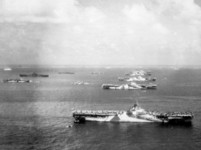
The Fifth Fleet was the most powerful naval force in the world. Here fast carriers and battleships of Task Force 58 sit at anchor awaiting their next assignment.
The Mobile Fleet carried 450 operational aircraft. There were more Hellcats in Task Force 58 than the Japanese had in total onboard their nine carriers! The pilots of the Mobile Fleet were far from the experts of Kido Butai at the start of the war. Most had barely 100 hours of rudimentary training in their various flying and combat roles. By comparison, the average American pilot had two years of training and 500 flight hours before they were even considered for deployment to the fast carriers.
Ozawa launched four raids towards Task Force 58 on 19 June. 373 planes were sent against the Americans. 322 were destroyed by intercepting Hellcats and AA from the ships of the task force. It was an aerial slaughter not seen before. A pilot on the USS Lexington (CV-16) was overheard following one of the raids “This is just like an old time turkey shoot back home.” The Great Marianas Turkey Shoot was born. The Hellcats tore the heart out of what was left of Japanese naval aviation. The Japanese had spent two years rebuilding their carrier strength only to see it destroyed in a single day. Lt. Alex Vraciu was famously captured (and shown in a previous update) on film holding up six fingers, one for each kill he’d scored that day. There were numerous pilots with high kill scores that day.
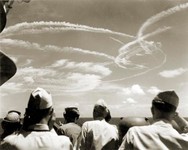
Sailors onboard one of the American carriers watching the "Great Marianas Turkey Shoot" unfold in the skies above them, 19 June 1944.
Throughout the rest of the war the Hellcat would be little improved until April 1944 with the introduction of the F6F-5. Later F6F-5 variants mounted four .50 caliber machine guns and 20 mm cannons. The two cannons provided additional firepower that proved extremely useful against the dreaded Kamikazes. The F6F-5 also allowed the mounting of wing rockets for additional firepower beyond the 2,000 lbs bomb load of the Hellcat.
On 15 August, two strikes were sent to raid Tokyo when at 0635 the carriers came on the air and broadcast:
All Strike Able planes, this is Nitrate Base. All Strike Able planes return to base immediately. Do not attack target. The war is over.
The last dogfight of World War II happened as the American planes returned to their carriers. Lieutenant (jg) M. Proctor of VF-9 shot down two fighters before he destroyed a Nakajima Ki-84 Frank as he made his way to his carrier. This was the last air-to-air kill of World War II, and it was completed by a Hellcat.
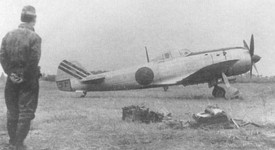
The last Hellcat kill of World War II was a Ki-84 Frank, like the one pictured above.
The last Hellcat left the Grumman “Iron Works” factory in Long Island, so named because of the ruggedness of Grumman aircraft throughout the war, in November 1945. 12,275 Hellcats had been built, with more than 11,000 of them being built between September 1942 and September 1945. Hellcat pilots in the Pacific and European theaters were credited with a total of 5,216 Axis aircraft in exchange for 270 Hellcats lost in air combat in that twenty-four month period, for an unprecedented kill-to-loss ratio of 19-to-1. A more impressive stat is presented by Barret Tillman who notes:
The Hellcat proved to be a superb bomber escort – something more often attributed to the Army Air Force’s P-51 Mustang. But official Navy records show that from 1943 to 1945, only 42 U.S. carrier-based dive bombers or torpedo planes were known lost to Japanese aircraft.
For obvious reasons, fighter pilots weren’t the only people who loved Hellcats.





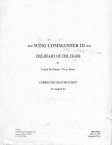

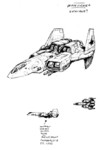
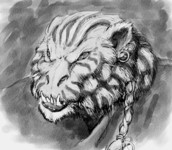


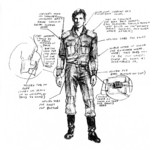
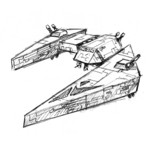
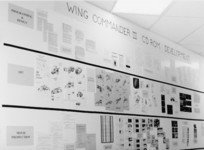



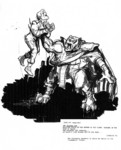
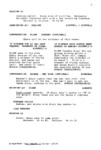
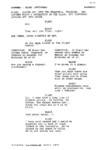


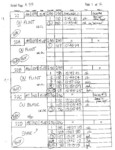

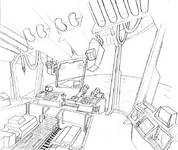
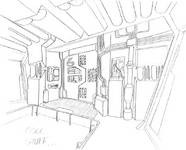
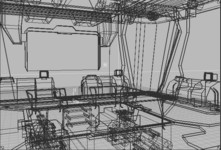
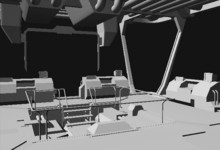
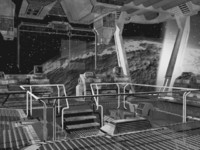

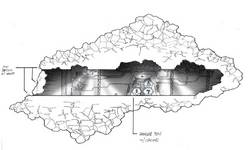
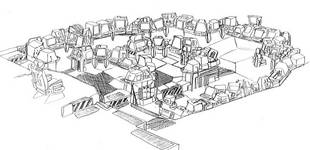

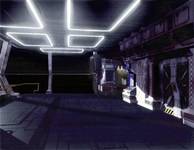

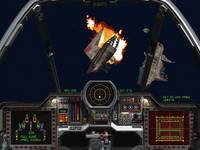
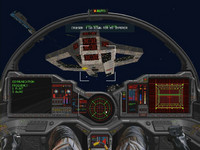

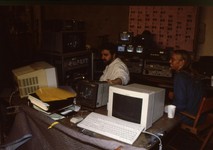

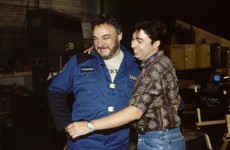
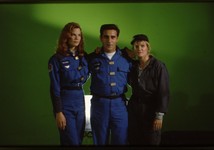


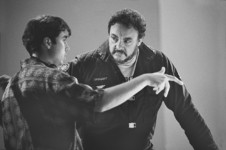
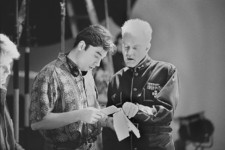
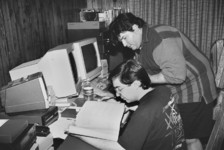




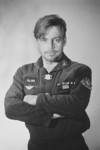
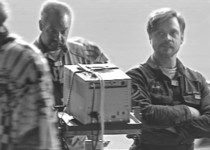


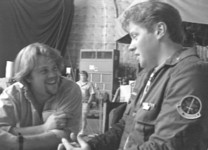
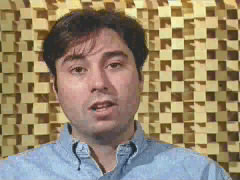
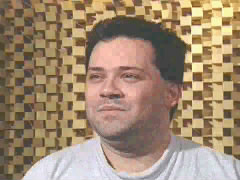
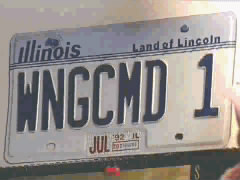
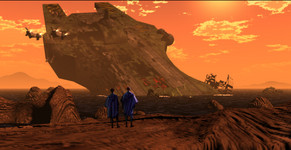


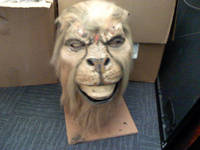

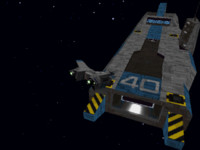
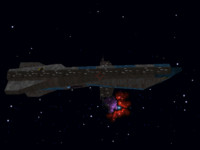
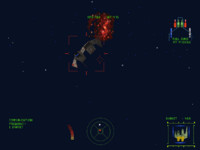
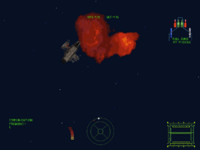
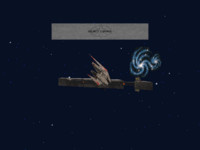
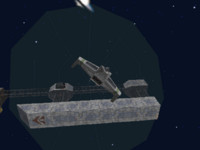
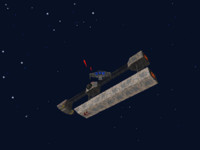
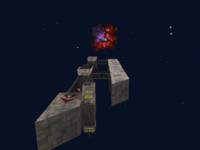
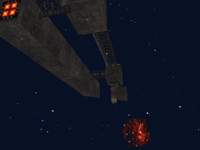
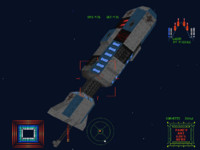
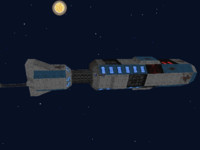
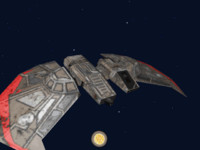
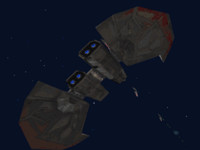

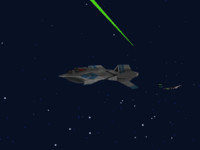
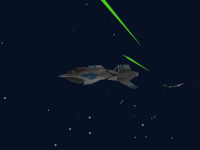

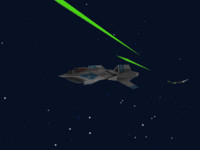
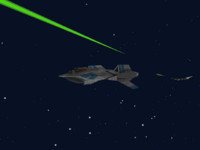
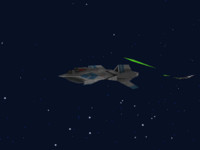


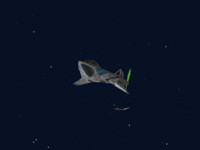
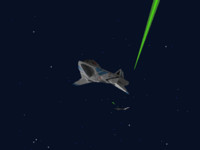
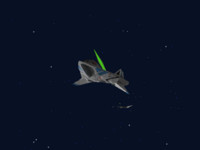
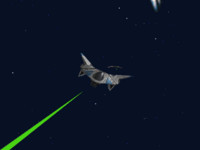
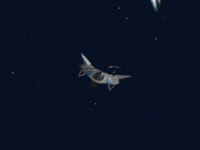
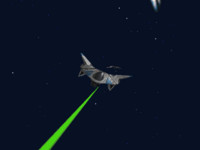

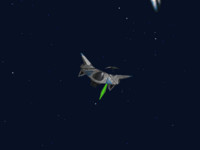
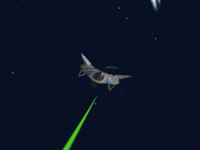
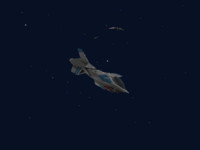

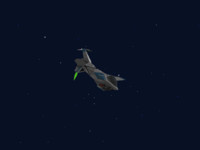
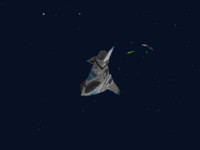
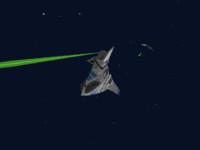
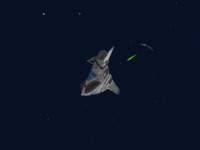
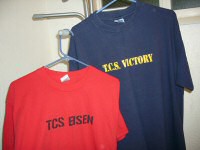
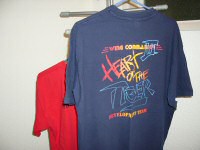

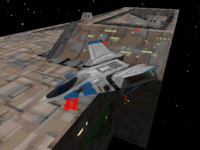
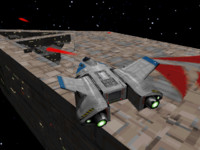

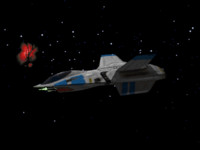
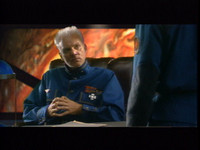
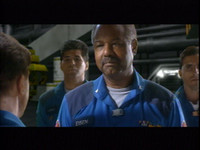
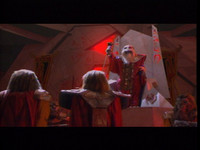
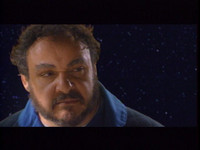

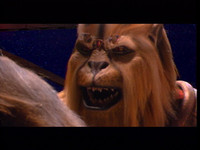


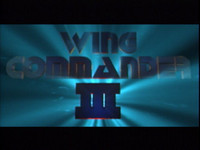
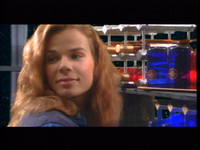
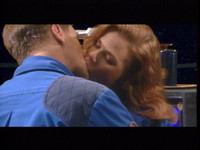
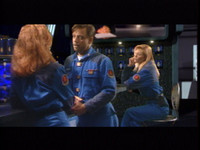
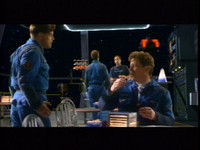

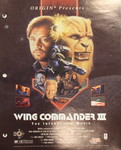
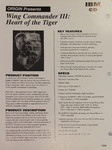
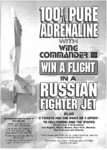
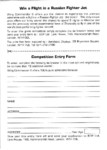

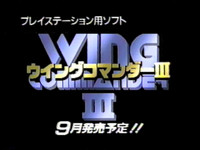
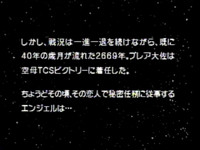






























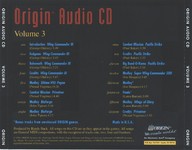
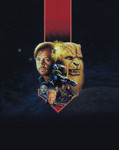

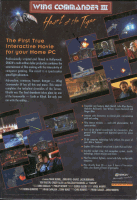




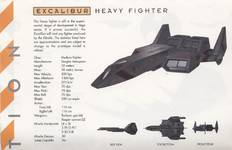
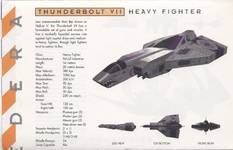
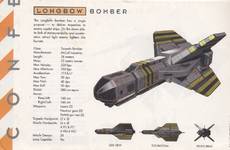
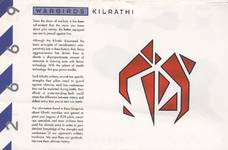


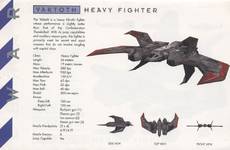


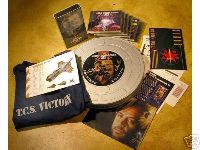

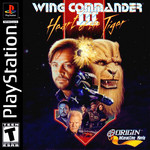




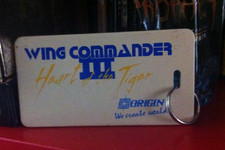
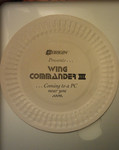
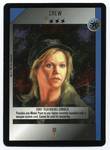

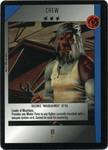

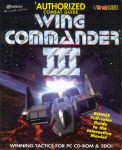





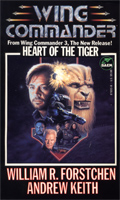


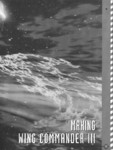
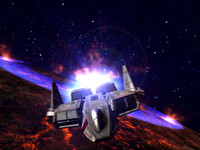


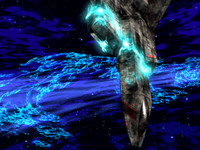

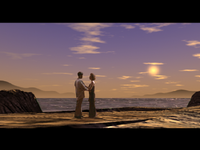
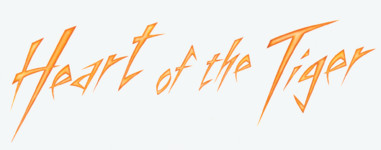

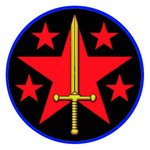
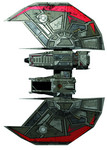
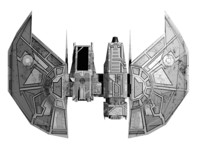
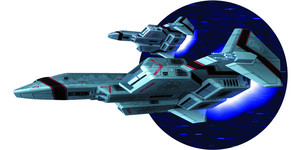
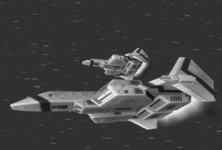

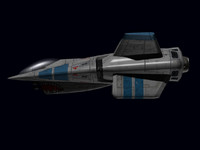
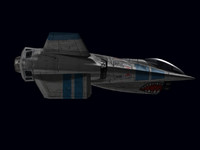
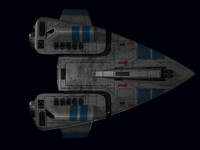
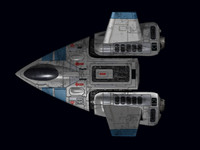
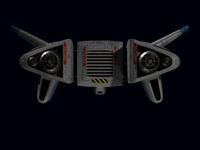
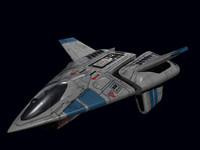
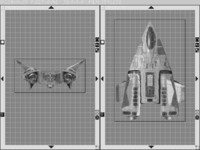
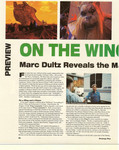
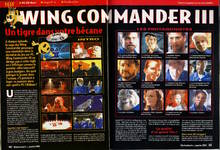
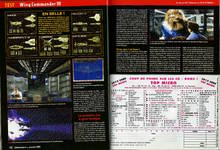
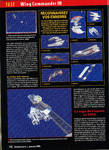




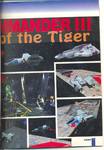
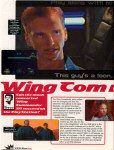
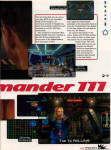
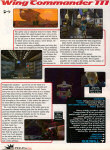


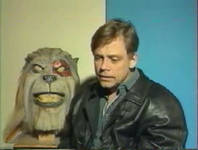
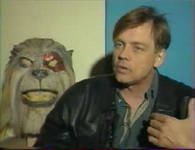
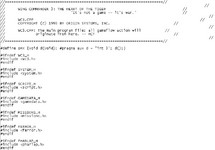


















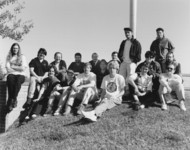
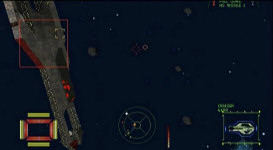
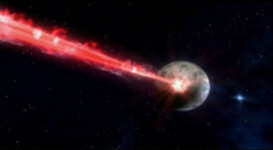
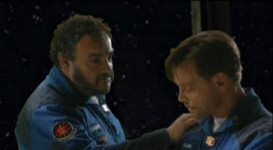

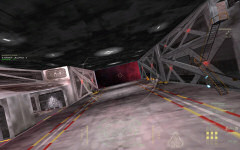
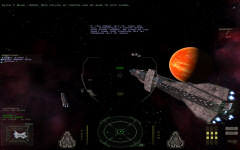

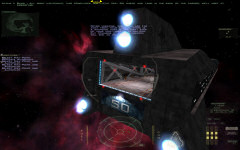






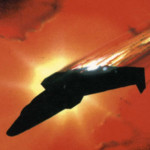
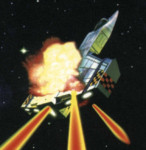


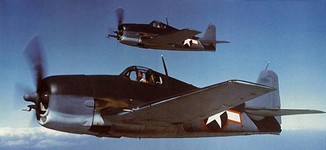
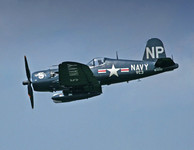









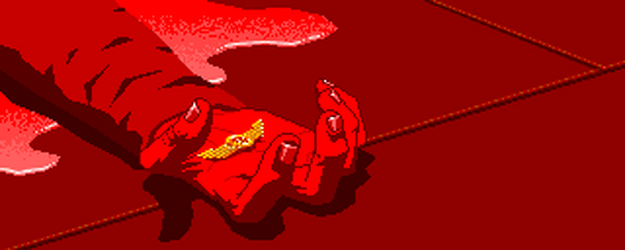

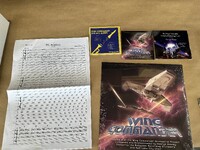

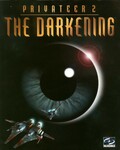
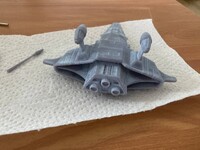
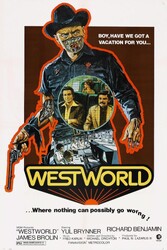
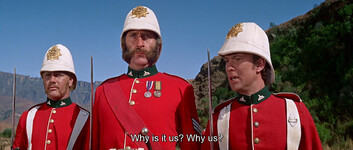

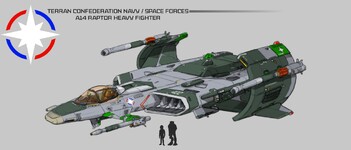
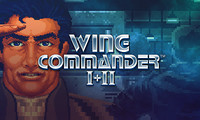



Follow or Contact Us